Bun Dosa is a thick dosa made in a kadhai. Made with a batter of rice and poha, this super fluffy and soft dosa is a crowd pleaser. This no-coconut version is also a low sodium, low potassium recipe suitable for a Renal Diet that is prescribed for people with Chronic Kidney Disease (CKD).
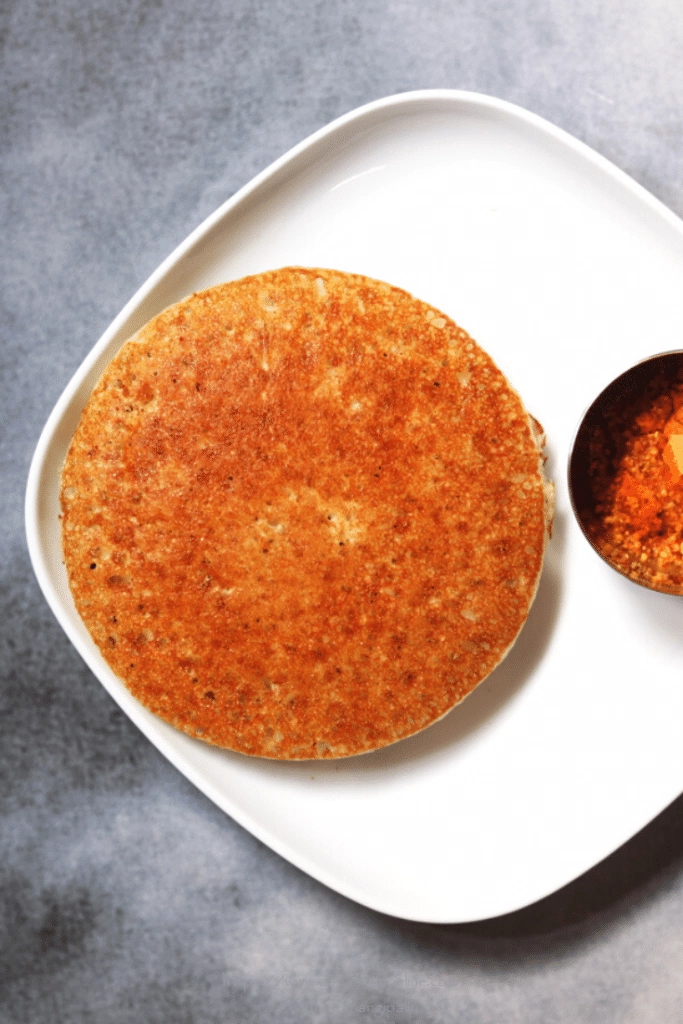
First things first, I must clarify that Bun Dosa is not the thin, flat pancake that you imagine when the word dosa is mentioned. It is in fact more like a plump bread made in a kadhai or a work. What I like about this dosa is that it makes a perfect vehicle to enjoy a variety of dishes like Sagu, Gojju, and of course, the usual chutneys and sambar.
Made with the same batter that was used to make the Rice and Poha Idli, this no-dal dosa makes for a filling breakfast, snack or even dinner on those days when you do not want an elaborate meal. Also, it is surprisingly light on the stomach.
The lack of dal in this rice and poha batter used to make the Bun Dosa, a low potassium, low sodium, low phosphorous recipe that is perfectly suited for people combating kidney ailments. The best part about this batter is that you can make a regular dosa with it and an idli as well.
The traditional Bun Dosa uses coconut in the batter. However, to keep this recipe suitable for a kidney diet, I have not used any coconut.
Tips to Make Thick, Soft Bun Dosa
- Any short-grained rice can be used to make the batter. In this batch, I have used Surti Kolam, but you can make it with Ponni rice as well.
- Soak the rice and methi together for at least 3 hrs. The soaking duration is primarily to ensure the methi seeds soak well and swell up. This is needed for good fermentation.
- Add the Poha to the soaked rice just about 5 mins before you grind the batter. If you add it in the beginning the mix will become sour very quickly.
- Let the batter ferment for at least 8 hours. The batter will rise but not as much as the traditional idli batter. You will find the batter spongy and light after fermenting.
- When you make the Bun Dosa, use just a few drops of oil to lightly grease the wok. This dish really does not need much oil, and that is a blessing too.
- Cook over low flame. Using high heat will cause the bun dosa to burn quickly as it is virtually made of only rice.
Why Is This Bun Dosa Well-Suited for a Renal Diet?
- This recipe yields 8 small Bun Dosas, each with only 42 mg of Potassium and 79 mg of sodium (assuming you add 1/4 tsp salt to the batter). That means that even a filling breakfast of 2 Bun Dosas would mean a 84mg Potassium and 138 mg of Sodium per meal.
- The batter is naturally fermented and uses no Sodium Bicarbonate (Cooking Soda or Soda Bicarb, high in Sodium) or Eno (Sodium Bicarbonate, Sodium Carbonate and Citric Acid mix that is high in Sodium AND potassium).
What Else Can You Make with This Versatile Rice and Poha Batter?
With this same batter, you can make two other dishes:
If you want some more low-potassium, low-sodium recipes, do take a look at my collection of renal diet recipes.

Please note that I am not a trained dietician. These are recipes that I use at home for a person suffering from Chronic Kidney Disease and they have worked with us. Please do check with your renal dietician or doctor about the suitability of these recipes for you.
How to Make Bun Dosa
- Making the Batter
- Wash 1 cup rice under running water and drain.
- Add 1/2 tsp methi or fenugreek seeds.
- Add 2 cups water and let the rice soak for at least 3 hours. In colder weather, you may need to soak the rice for at least 5 hours. The soaking time is primarily for the fenugreek seeds; check that they are soaked well.
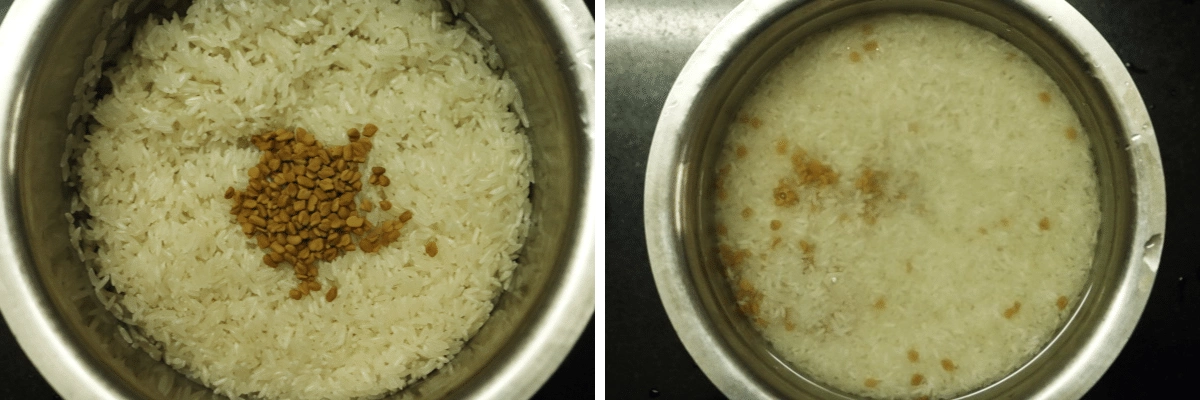

- Just 5 minutes before grinding the batter, add 1/2 cup poha or beaten rice flakes to the soaked rice.

- Let the poha soak for 5 minutes and then completely drain all the water from the soaked ingredients.
- Transfer the soaked ingredients to a grinder.
- Add 1/3 cup water and grind the ingredients to a coarse paste.
- Add a further 1/3 cup water, a little at a time, and grind the mix to a smooth batter.
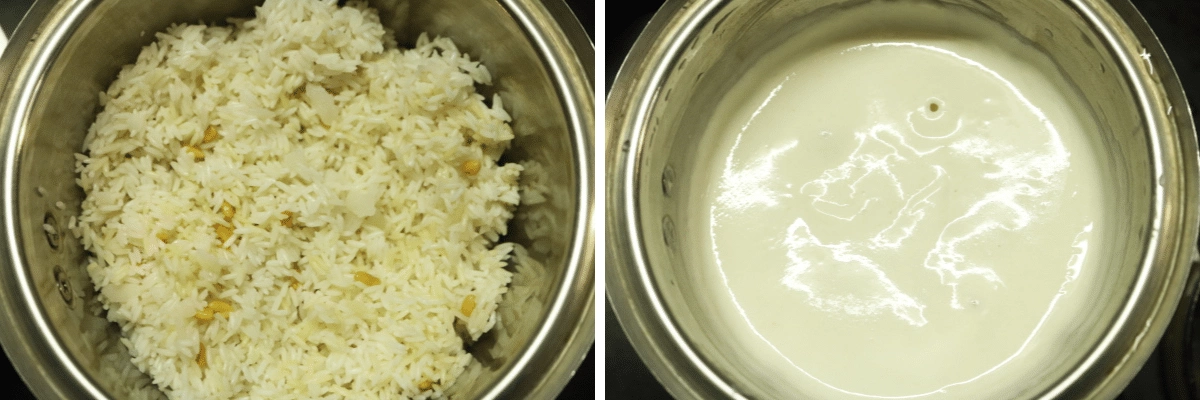
- Transfer to a vessel and check the consistency of the batter. The batter should slide off a spoon and form ribbons.
- Cover and keep the batter in a warm place to ferment for at least 8 hours. This batter will rise but just a little. It will not rise as much as the regular rice and udad dal idli batter.
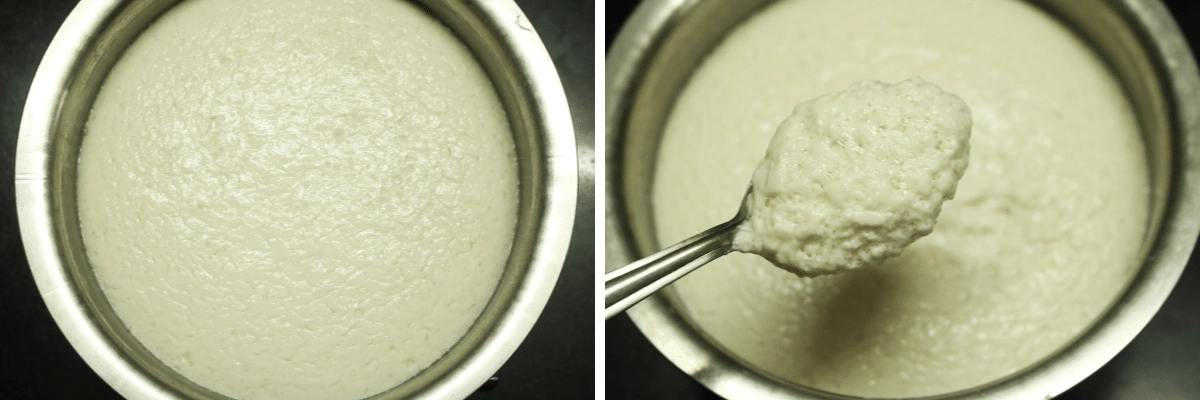
- Add salt and mix with a gentle hand. For a renal diet, do keep the salt within permitted limits.
- Making the Bun Dosa
- Using a few drops of oil, lightly grease a kadhai.
- Over low flame, heat the wok.
- When the wok is warm, add 1/3 cup of batter.
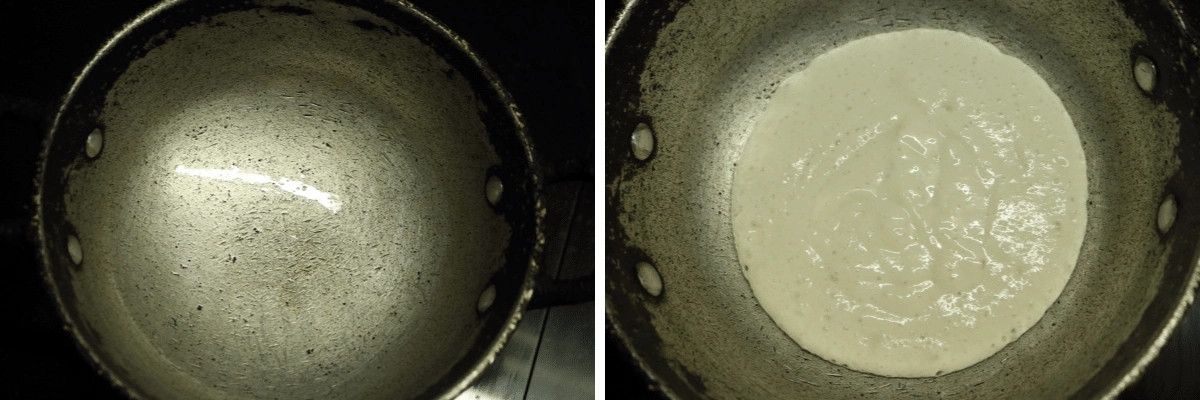
- Cover and let the Bun Dosa cook for 5 minutes.
- Using a sharp turning spatula, gently loosen the Bun Dosa from the pan and flip it over.
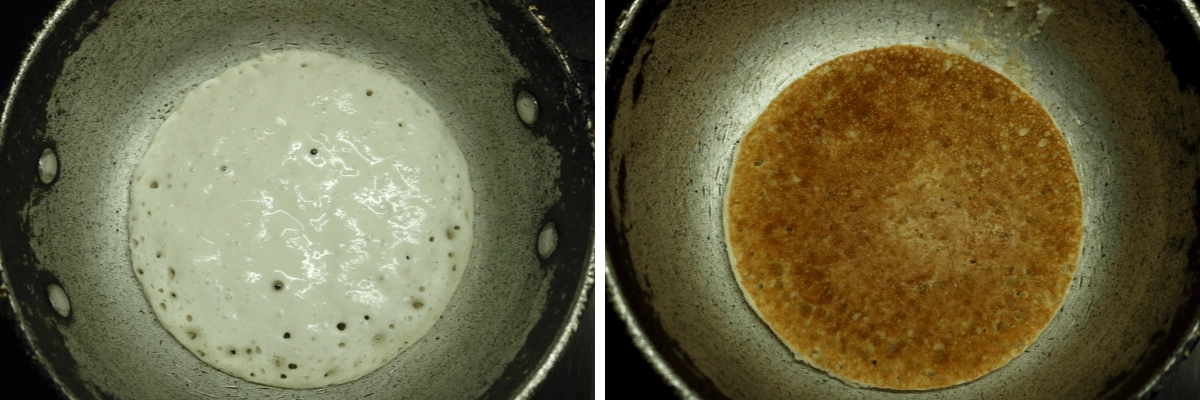
- Cook for a couple of minutes.
- Serve the hot Bun Dosa immediately with a chutney of your choosing.
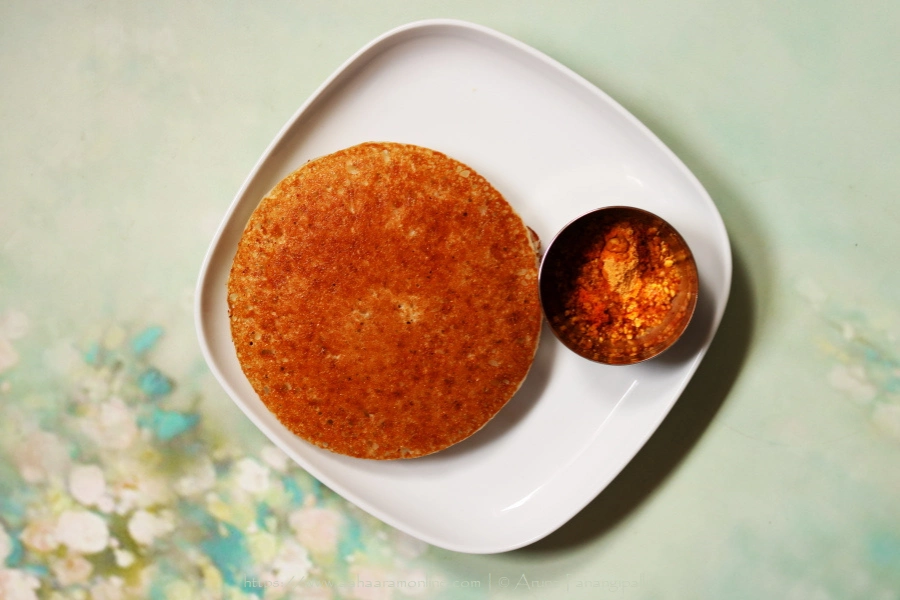
Recipe for Bun Dosa: A Thick and Soft Rice and Poha Dosa (Low Potassium, Low Sodium, Low Phosphorous Renal Diet Recipe)
Bun Dosa: A Thick and Fluffy Rice and Poha Dosa (Renal Diet Recipe)
Equipment
- Large Bowl
- Spoon
- Grinder
- Kadhai or Wok with Cover
- Turning Spatula
Ingredients
- 1 Cup Rice (200 gms)
- 1/2 Cup Poha (40 gms)
- 1/2 tsp Methi Seeds (3 gms)
- 2.75 Cups Water
- Salt to Taste
- Few Drops Oil to grease the kadhai
Instructions
- Wash 1 cup rice under running water and drain.
- Add 1/2 tsp methi or fenugreek seeds, and 2 cups water.
- Soak the rice for at least 3 hours. In colder weather, you may need to soak the rice for at least 5 hours till the fenugreek seeds puff up well.
- 5 minutes before grinding the batter, add 1/2 cup poha or beaten rice flakes to the soaked rice.
- Let the poha soak for 5 minutes and then completely drain all the water from the soaked ingredients.
- Transfer the soaked ingredients to a grinder.
- Using 3/4 cup water, grind the ingredients to a smooth batter. Add 1/2 cup water first and 1/4 later in small quantities.
- Transfer to a vessel and check the consistency of the batter. The batter should slide off a spoon and form ribbons. If not, add just 1-2 tsps of water.
- Cover and keep the batter in a warm place to ferment for at least 8 hours. This batter will rise a little and become spongy.
- Add salt and mix with a gentle hand. For a renal diet, do keep the salt within permitted limits.
- Grease a wok or kadhai with a few drops of oil.
- Over low flame, heat the kadhai till it is warm. The entire cooking should be done on low heat, otherwise the bun dosa will char quickly and the insides will not cook.
- Add 1/3 cup batter to the kadhai. Do not spread the batter or swirl it around.
- Cover and cook for about 5 minutes. The surface should dry out a bit and the edges should be a bit brown.
- Using a sharp spatula, loosen the Bun Dosa from the kdhai and flip it over.
- Cook for a couple of minutes.
- Serve hot Bun Dosa immediately with Chutney Powder, Coconut Chutney, Sambar or in the case of a renal diet, with Cranberry Chutney.

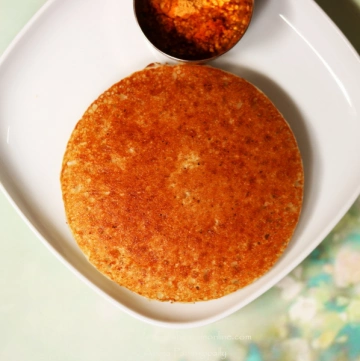

Hi…tried ur rice poha dosa for my baby. Loved it as it’s so quick to make and was softer than usual dosa. Plz share more recipes that can be given to 1 year olds too. Thanks again.
Wow… that was quick. I am happy your baby loved it. I will certainly try to post more recipes suitable for 1-year olds. You could also make Idli with this batter and try my recipe for Rava Porridge as well.
Thank you again for letting me know that you liked the recipe. 🙂
Thank you so much for these ideas. My dad is on a strict renal diet and he is visiting me .It can,be so challenging to think up recipes with CKD. Please keep sending whenever possible . I will try all these in the coming days.
Thanks again.
Happy to be of help!
can we do this without fermenting for 8 hours? the doctor has advised not to eat fermented items, with ckd.
Unfortunately no. Unless it ferments, it won’t be useful. You can try the Rava Uttapam recipe.